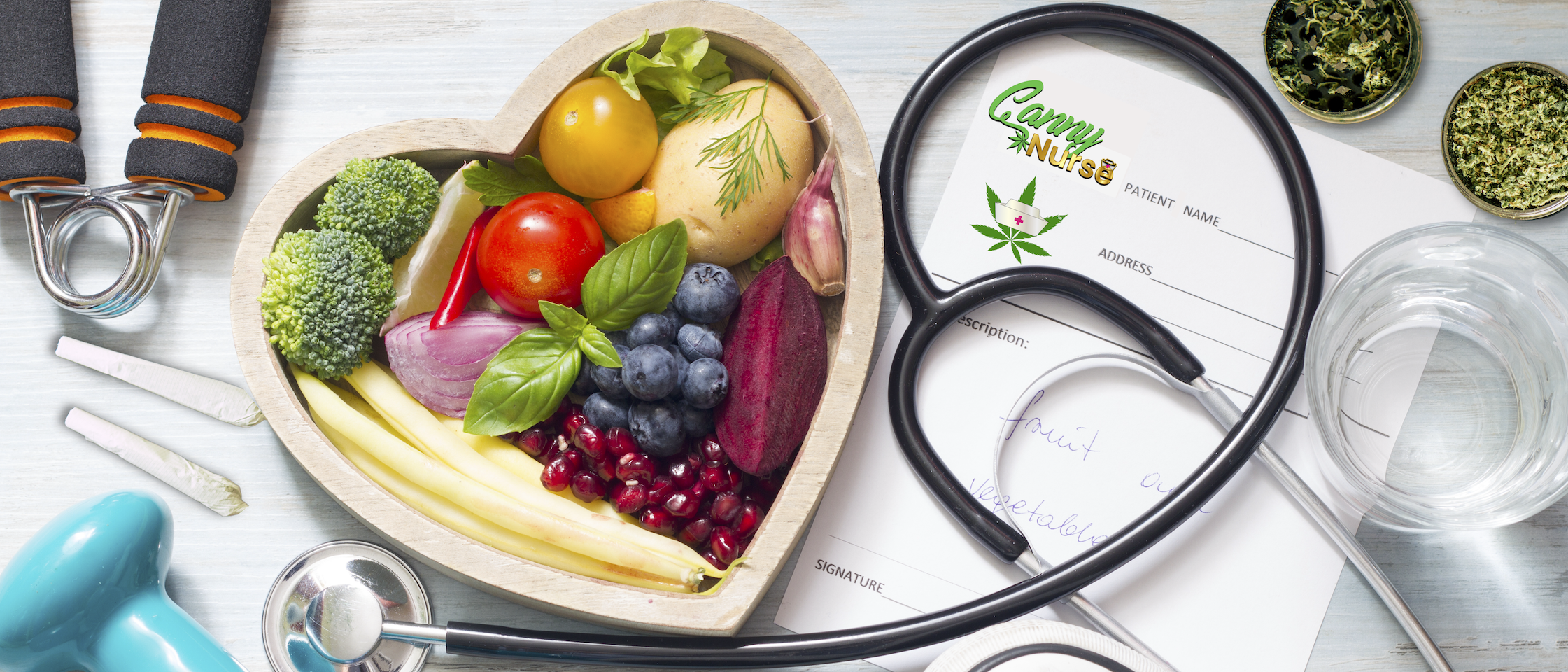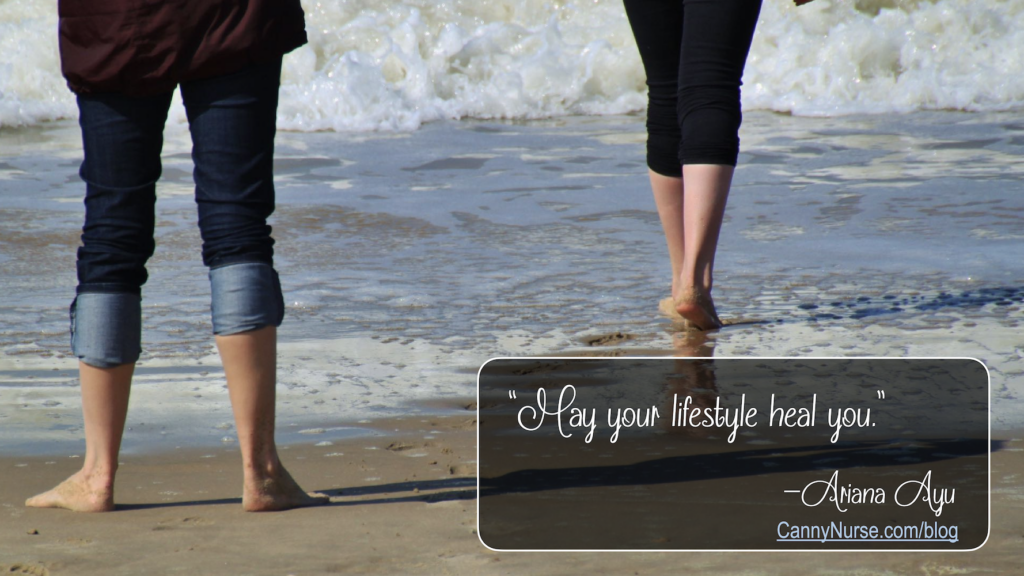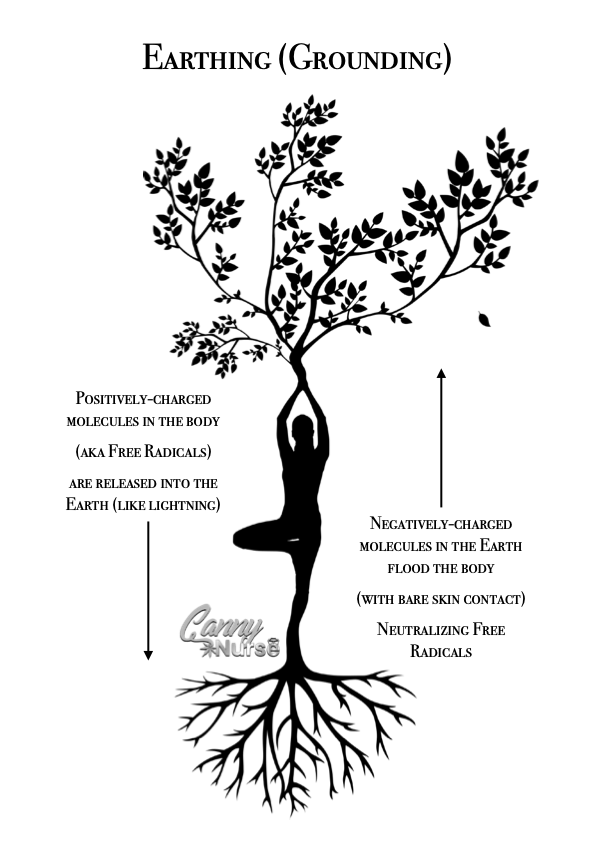
Lifestyle Medicine (part 3)
This is the third article in a 3-part series. The first article talked about what lifestyle medicine is and how our “modern lifestyle” is damaging our health. The second article talks about ways our modern Western lifestyle is detrimental to health. This article looks at simple, low-cost ways we can adjust our lifestyles to promote health.
“May your lifestyle heal you.”
–Ariana Ayu, aka The CannyNurse™
Instead of that initial admonition for us all to be better (“let your lifestyle heal you” — as in, stop doing whatever you’re doing wrong), I offer this blessing: “May your lifestyle heal you.” It’s my hope and wish for all people — that this change may come gently and gracefully for each of us. When I was a teenager, I remember thinking that everything in the world — all the problems we faced — would be dissolved if we all felt inner peace. We wouldn’t be greedy for more, because we wouldn’t have a hole inside us that needed filling. We wouldn’t strive for anything, we’d simply be content. We wouldn’t be apathetic either though, because we’d feel satisfied doing whatever things we needed to do. We wouldn’t want our lives to be different than they were. We’d simply be satisfied.
A few years after I got married, I realised that I’d spent my younger years yearning for passion and excitement in my romantic relationships — the sorts of things I saw on TV or romantic comedies. I hadn’t come to the realisation (yet) that the types of things that make good stories did NOT make happy lives. Where’s the excitement in the story of two people who love each other, respect each other, and have an easy time being together? Contentment and satisfaction make poor viewing… but they are a lovely way to live.
That’s really the secret to lifestyle medicine — it’s about finding ways to live that nourish us. Lifestyle medicine doesn’t deprive us of the things we want, rather it lets us enjoy what we really need. The focus is on small, gentle, meaningful shifts or adjustments. I don’t even really think of it in terms of changes — though they certainly are. Change, however, implies a lot of hard work. Making small, but purposeful shifts or adjustments to our habits sounds and feels a bit easier, doesn’t it. We’re not suggesting anything too wild, just taking a few steps in a direction that promotes health and joy.

So, with that in mind, let’s look at some gentle shifts you can make in your lifestyle that will lead you toward health.
Please note: the goal isn’t to pressure yourself into doing all of the things listed below — or any of them, for that matter! Read through the suggestions and then pick ONE THING that appeals to you. Make one small adjustment to your daily lifestyle, and see how it feels. When that has become habit, add one more thing. Every shift you make will teach you something, provided you give it time to take effect.
Know also that we are ADDING things that promote health — not taking anything away.
Nutrition
 Let’s start with the basics here. Researchers KNOW that dieting does not work. They’ve known that for years.
Let’s start with the basics here. Researchers KNOW that dieting does not work. They’ve known that for years.
Rather than take on a restrictive diet, why not focus on the basics? Most of us do not eat enough fresh fruit and vegetables. So start there: increase your daily servings of fresh produce. Yes, fruit has sugar in it, so if you’ve spent years avoiding it because you were told low-carb was the answer to everything, maybe cut yourself a little slack. If you can, try to eat foods that are local and in season. It’s the “shop the perimeter of the grocery store” model — focus on foods that are found in nature, and things that your great grandparents would have eaten …assuming they lived somewhere rural and ate local food.
Drink clean water. If your water comes from a well, get it tested for contaminants (you’re supposed to do that annually anyway). If your water is pumped into from some sort of shared supply, consider getting a filtration pitcher or a filtered tap. Tap water has been shown to contain pharmaceutical waste along with the chemicals used to discourage microbial growth, and some supplies are much more contaminated than that (just ask the folks in Flint, Michigan). If your skin feels dry and itchy after bathing, a shower filter can also be useful. Our skins easily absorb things from our environment, so protecting your skin from chemicals in the local water supply can make a surprising difference.
Eating locally sourced, organic foods including meat from animals that have been raised in natural environments (pasture-raised, grass-fed, no crowding, quick & humane deaths) is certainly the ideal, but does come with an additional cost that may be prohibitive for some. When thinking about eating meat, I always say I want my animals to be well-loved before I eat them. An old acquaintance once told me that when you’re hunting deer, you want to be as hidden as possible, because if they get scared just before they die, their bodies will be flooded with adrenaline (from the fight or flight response) and they will taste “more gamey.” I think this applies to animals raised for meat as well as wild ones — we may or may not notice a difference in taste; I suspect if all one has ever eaten is beef flooded with hormones and adrenaline, we’d be used to that taste. If we accept the idea that we are what we eat, and we mostly eat meat from animals who were scared, unable to roam freely, and full of stress and anxiety, well… it’s easy to see where that goes.
If you want to adopt a therapeutic diet, I often recommend looking into an anti-inflammatory diet. Many of our modern diseases are worsened by inflammation, so it can help a lot to increase our consumption of foods that naturally decrease inflammation (which are unsurprisingly, whole foods found typically at the perimeter of the grocery store — fresh or frozen fruit, veggies, and hormone and antibiotic free meat). For more information on this, read the work of Dr. Sarah Ballantyne who is one of my trusted resources. Her work is well-researched, helpful, and practical, so I refer to her work frequently when I want a well-researched answer to a nutritional question.
One other thing I’ve learned though, after studying over 100 different dietary theories, is that there is not ONE right way to eat for everyone. There are “blue zone” people living over 100 years eating different diets in different parts of the world. (By “diets” here, I mean it in the original sense — as in the food a person or animal typically eats, not a restrictive “plan” one has to follow.) Some populations eat a lot of rice our legumes, while others swear that low-carb is the only healthy way to go. The $192 billion diet industry (including diet book authors) makes a lot of money when we all believe that a certain specific regimented diet plan will make everything better. It’s a delusion though, and too many of use have compromised our health by buying into this concept. Remember how our culture was told (by doctors) that cigarettes were healthy? And then years later that margarine was better for us than butter? These things have been disproven time and again, but marketing is a powerful thing.
Another thing that impacts our health is our cultural obsession with weight, appearance, and thinness. Research now shows that being overweight or obese is not a guarantee of poor health. It also shows that being thin does not automatically make us healthy. Weight stigma is a source of constant stress for many people, regardless of their size (since it’s partly our own internal idea of what we should look like that causes this stress), and it is well-known that chronic stress is dangerous to our health.
The last thing I’ll address here is nutrient density. This refers to consciously consuming food that gives our body the most vitamins, minerals, essential fatty acids, and other chemical building blocks we can. It’s sort of like getting the most nutritional bang for your bucks. The opposite of this would be eating foods that function as “gut fill” but don’t help our bodies do the things they need to do. Eating naturally nutrient dense foods means we don’t need to buy supplements and “enriched” foods. Those are a poor substitute for real foods, and often highly processed and adulterated to make them more appealing. How do we find nutrient dense foods? Go back to that perimeter-of-the-supermarket thing. See? We keep coming back to fresh or frozen fruit, vegetables, and products from well-loved animals (including organ meats, if you can stomach them!).
Sleep
 If you think I had a lot to say about nutrition, you’ll be surprised to know I’m even more obsessive about sleep (it’s one of my favourite hobbies!). I have a wee bit less to say on this one however. Basically, it boils down to: if you don’t have the energy you want throughout the day and rely on stimulants (like caffeine) to energise you, you probably need more sleep.
If you think I had a lot to say about nutrition, you’ll be surprised to know I’m even more obsessive about sleep (it’s one of my favourite hobbies!). I have a wee bit less to say on this one however. Basically, it boils down to: if you don’t have the energy you want throughout the day and rely on stimulants (like caffeine) to energise you, you probably need more sleep.
That said, there are definitely things we can do to increase our chances of getting a better night’s sleep.
Darkness is key to getting high-quality sleep, because the darkness signals to our brains that it’s time to rest. This actually triggers different chemicals (like melatonin) to be released in our brains which help our bodies rest and repair. So, if your sleep environment is not dark, get some room-darkening shades or curtains. If these are too expensive, there are other creative ways to darken a room. When I started working as a nurse, I had to work overnight in the hospital and it was really tough for me to sleep during the day. I tried all sorts of homemade solutions, including, advice from a veteran night shift nurse that suggested using aluminum foil and cardboard to cover my windows so not even a speck of light shone in. Blankets also make good blackout window coverings, as long as they’re not so heavy that they fall down.
Try to maintain a regular sleep/ wake schedule if possible. Sleeping in on the weekends can help if you are unable to get enough sleep during the week, but it’s not ideal. That said, any way to increase sleep when you’re sleep-deprived is good for your body and your mind. Yes, you read that right: your mind. Sleep not only helps us repair and regenerate our body, but it also helps with memory consolidation and cleansing the brain itself.
If you want to learn about more sleep-promoting habits, they’re easily found online by searching “sleep hygiene.” Unlike nutritional advice, it’s very much consistent between sources.
As far as medical cannabis, if you’re in a location where cannabis with THC (type I chemovars) is available, evidence shows THC can be very beneficial for insomnia. However, no substances should be considered a “cure” rather, you might consider THC a helpful tool (in low and slow doses, see guidance on self-titration here) while making the other adjustments in your daily and nightly habits.
Some people find CBD (cannabidiol) helpful for sleep as well, but it’s important to note that CBD can be stimulating, so it’s better taken before 5pm. That said, I know many people who take CBD before bed and say it helps them sleep. The important thing in this case is to pay attention to how it makes you feel. I have one client who says CBD “slows me down” so she likes to take it before bed. It can help reduce anxiety, so for some people that might be useful at bedtime. The most important thing in cases like this is that you’re paying attention to your own body and your own experiences. And if CBD was helpful for you to take at night for awhile, then became stimulating (and therefore not helpful before bed), you can simply switch to another schedule. Your CannyNurse™ will be happy to help you figure this out.
We HAVE to sleep, eat, and drink every day, so those are the first areas of lifestyle medicine I address with clients.
The following areas are also important, but as I mentioned in the very beginning, you’ll want to start slowly and make gentle, gradual shifts in your daily habits. I’ll try to keep the following areas brief, but please know there is a lot you can do in these areas and beyond. You can also feel confident that your CannyNurse™ is well educated in these areas and will be happy to help you figure out the best next steps for you.
Movement & Play
 While it’s true that our “modern Western lifestyle” is much more sedentary than that of our ancestors, many of my clients are dealing with chronic pain issues, so even the word “exercise” can cause anxiety. Rather, I like to ask the following question:
While it’s true that our “modern Western lifestyle” is much more sedentary than that of our ancestors, many of my clients are dealing with chronic pain issues, so even the word “exercise” can cause anxiety. Rather, I like to ask the following question:
What physical activity would you like to do more of?
Once you’ve identified some form of movement that feels enjoyable and practical given your body and circumstances, look for ways to incorporate it as a habit. If you’re in physical pain and/or have mobility limitations, remember to start slow and increase at a gentle pace that feels right for you. Chronic pain patients may benefit from an app such as Curable that help you re-wire your body and brain’s reactions to stress and pain.
If you used to love to go dancing, but have become so sedentary that the idea of dancing to 1 song feels like a lot, start there. You might also consider these 30-second stress relievers as a starting point. A common suggestion for people dealing with pain is to take up walking, but this can be hard for many people dealing with pain. Beyond the pain, there is often anxiety about how you’ll manage if you’ve walked farther than is comfortable and are anticipating a difficult journey home. Nordic walking, assisted with specific Nordic walking poles, might be an option for some people. Personally, after many years of walking in pain (from a work-related back injury), trying varied footwear and other solutions, this online nordic walking class made a big difference (there was no one in my area who taught the technique). The technique of it means you get a full-body workout (using your arms, legs, and shoulders like on a nordic track), but what I love is that walking in this manner (and with the poles available for support) seems to take the pressure off my back and I can walk farther and feel better at the end of my journey than I can normally. (It has increased my general endurance as well, but walking distances with so much less pain is a HUGE win for me.)
Bottom line: find ways to increase your movement that are enjoyable and you will be more likely to incorporate them as new habits.
Stress Management

Chronic stress is damaging our health. There’s a ton of research supporting this and you can find loads of information on it, so I won’t repeat that here. One of my favourite ways to reduce stress is to spend time in nature. There’s a decent amount of research on how being in nature helps as well.
One of my favourite FREE interventions is called Earthing (or grounding). It’s very simple and it has profound anti-inflammatory benefits for the body as well as mild anti-coagulant benefits, so if you’re taking blood thinners, you should be monitored more closely when beginning this practice.
Earthing is an electrical exchange between your body and the Earth and it happens automatically when your bare skin is in contact with the Earth. In nice weather, I like to sit outside, look at the view, and drink my morning coffee with my bare feet in the grass, but that’s not the only option. Since it’s cold where I live in Scotland, I often go outside in my thick wool socks or place a towel on the ground if it’s very wet. For me, spending 15 minutes a day doing this makes a dramatic impact on how I feel. It’s my morning meditation (open-eye), a chance to collect my thoughts and centre myself.
You don’t have to put your feet on the ground though. Many gardeners spend hours with their “hands in the dirt” and reap the same benefits. Sitting on stones or burying your feet in the sand can have the same effects.
Why is this important to us? Well, because our bodies are electromagnetic, just like the earth is. Electrical impulses tell your heart to beat and transmit messages between your brain’s neurons. In most of human history, our ancestors slept on the ground and regularly discharged our body’s excess electricity (free radicals) into the ground. Now, we live off the surface of the earth, with rubber-soled shoes that do not allow the natural electrical current to run between our bodies and the Earth. This simple, free activity can make a huge difference in your daily life. Why not give it a try?

There are a lot of ways we can improve our own health, but here at CannyNurse™, we strongly believe in slow, gradual shifts that can become lifestyle habits. For more information and to creat a personalised lifestyle medicine plan to help your body balance itself, find a CannyNurse™ to guide you through the process.
References:
Allied Market Research. (n.d.). Weight loss and weight management diet market size, share & trends. Retrieved January 18, 2022, from https://www.alliedmarketresearch.com/weight-loss-management-diet-market
Ballantyne, S. (2019, May 8). The importance of nutrient density. The Paleo Mom. Retrieved January 21, 2022, from https://www.thepaleomom.com/nutrient-density/
Ballantyne, S. (2021, July 22). Can you really be healthy at any size? The Paleo Mom. Retrieved January 21, 2022, from https://www.thepaleomom.com/healthy-at-any-size/
Ballantyne, S. (2021, December 1). What is the autoimmune protocol. The Paleo Mom. Retrieved January 21, 2022, from https://www.thepaleomom.com/start-here/the-autoimmune-protocol/
Menigoz, W., Latz, T. T., Ely, R. A., Kamei, C., Melvin, G., & Sinatra, D. (2020). Integrative and lifestyle medicine strategies should include Earthing (grounding): Review of research evidence and clinical observations. EXPLORE, 16(3), 152–160. https://doi.org/10.1016/j.explore.2019.10.005

Author, activist, international speaker, multi-preneur, mentor, wife, and mom, Ariana Ayu is a Transformational Mystic and a Catalyst for Conscious Change.
She is the creator and lead educator for the CannyNurse™ Certificate Program, a 50-hour CEU program for nurses from LPNs through doctoral degrees, and the first comprehensive cannabis nurse training program designed for working nurses. An ordained priestess, holistic healer, and lifelong student of ancient/ modern wisdom, Ariana’s nursing background includes pediatrics, labor & delivery, nurse education, and Holistic Health/ Integrative Nurse Coaching.
She earned her MSc in Advancing Nursing Practice from the University of Edinburgh in Scotland (UK), and her Cannabis Nursing Certification from Pacific College of Health and Science.
She is passionate about racial justice, social equity, environmental preservation and conservation, and empowered health, wellness, and joy for all. Her practice is governed by the ethical principles of integrity, nonjudgment, empowerment, and respect for her clients’ autonomy.